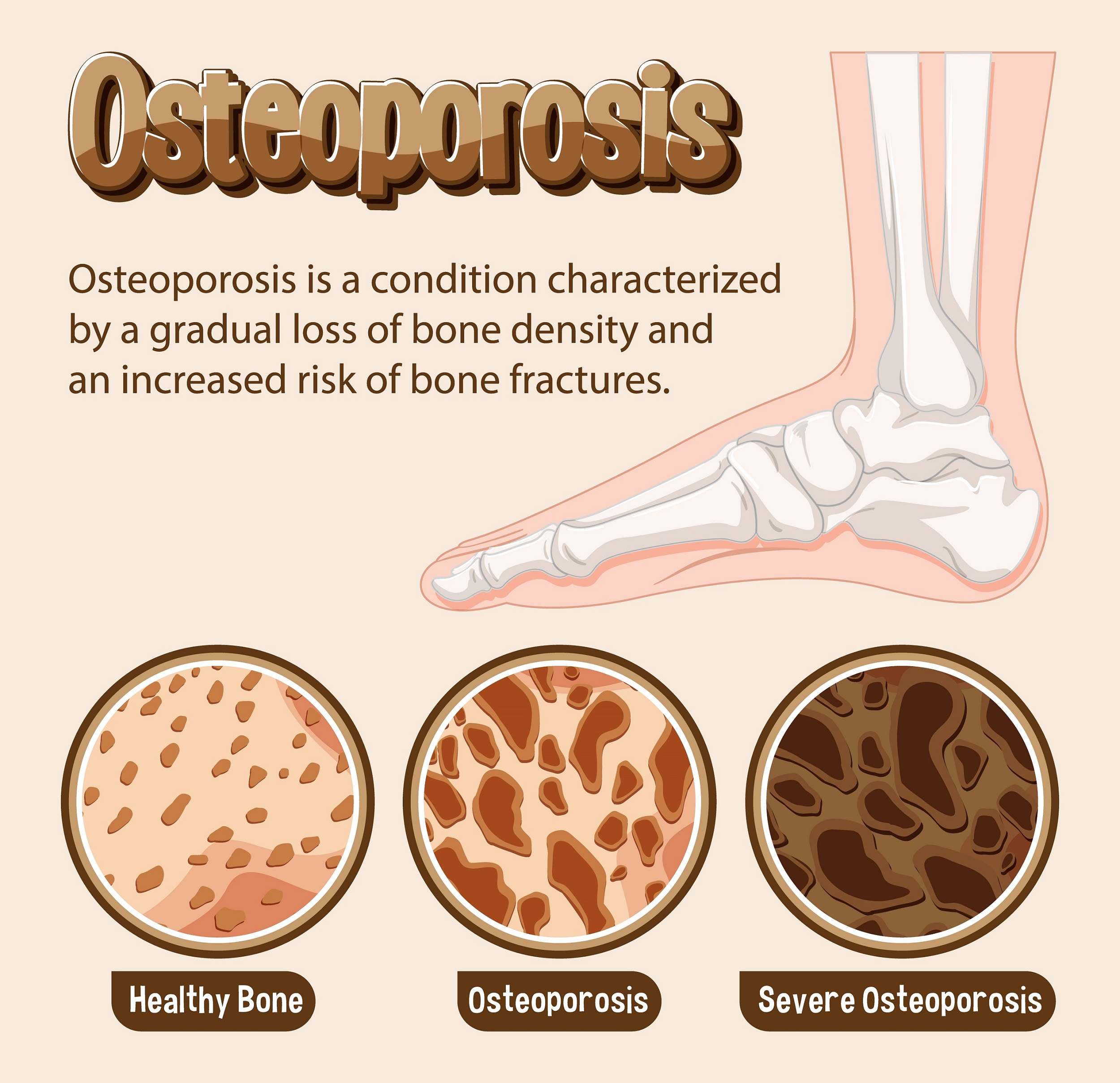Chicago Mobile Foot Care Limited
We can help you! For your first evaluation and resolution to your concerns please visit us at any of our 3 Chicago land locations. We speak English, Spanish, Polish and Russian.

Chicago Mobile Foot Care Limited
We can help you! For your first evaluation and resolution to your concerns please visit us at any of our 3 Chicago land locations. We speak English, Spanish, Polish and Russian.

Osteoporosis, a condition characterized by low bone density and increased risk of fractures, can have significant implications for podiatric care. The bones of the feet and ankles are not immune to the effects of osteoporosis, and podiatrists play a crucial role in both the prevention and management of foot-related issues associated with this condition.
Call to schedule an appointment with our Chicago podiatrists . Our podiatrists can provide a proper diagnosis based on your symptoms, medical history, and potentially recommend imaging studies or other diagnostic tests to identify the underlying cause and determine the appropriate treatment.
Here are several ways in which osteoporosis intersects with podiatry:
Overall, podiatrists play a critical role in the prevention, assessment, and management of foot-related issues in individuals with osteoporosis, helping to improve mobility, reduce pain, and enhance quality of life.
My feet felt wonderful after seeing Dr. Pidolshiy.
Pamela P.
Very nice staff. I had a very pleasant visit, I will be returning.
Maya C.
Always good care!
Marcin N.
Always great service to my daughter and family ,staff very friendly ! Very recommended .
Maryann Z.
Dr Vadim always takes great care of my foot, I have been going there for years. He provides fast effective service.
Gerardo H.
Great Doctor and wonderful staff, they helped me a lot when i broke my ankle!
Kinga K.
The staff was patient and considerate. Dr. Szmyd was very helpful in keeping my treatment affordable.
Burton C.
Dr Vadim is very nice and does very good work
Krystian W.
Always a great experience at the foot doctor with Dr. Galina. I usually don't know what I need at the time of service except that I have some sports related injury; but when I leave...
Ajahnae H.
Dr. Goshko took excellent care of my broken foot. Nice and friendly atmosphere at the office. I recommend this place
Kinga N.
Dr Goshko is great, he helped me with my broken ankle, very nice and friendly office.
Marcin N.
I had my bunion surgery done. It was done great. They use new technique that leaves you without scars. Just after 2 weeks I was able to wear a wide regular shoe. I would suggest...
Nadiya K.
Dr. Gelgbmann is better than excellent! I can't say enough good things about Dr. Gelbmann and his staff. Dr. David took wonderful care of my son's nail infection and put an end to it! Since...
Katarzyna M.
From scheduling appointment to visit itself the process was nice and easy. Doctor took time to explain everything in details, office staff is friendly and helpful, I was very pleased with overall experience.
Urszula G.
Very easy! Margarita scheduled my appointment, confirmed my insurance and email me confirmation. Anetta greeted me and took excellent care of me. Doctor made the process quick and easy!
Miguel Torres
My overall experience was great, I've been using this clinic for a while now and the doctor always takes good care of me , he explains everything, takes time to listen to my problems. it...
Yasmin
The office and staff personnel are always there to help with all you need. I'm very satisfied with the overall experience, it's nice to know that they care about you, and doctor does take time...
Rich Velazquez
Physician always answers all my questions. Staff is always nice, friendly and efficient.
Sandra K.
Everyone is professional, nice and friendly. We always have great time here.
Sue C.
Office and office staff are always nice and friendly, always there to help with all questions you might have. Doctor takes time to listen and spends good amount of time to explain everything to you....
Ryszard Litkiewicz
Doctor took great care of my problem, explain all. Office is nice and clean. Staff very nice as well.
Fay C.
I was very satisfied with overall experience at this clinic, they took excellent care of me.
Linda G.
5 STAR , very satisfied patient. Doctor took time in getting to know me and my problem, staff helped with questions i had. It was easy to get appointment. I would recommend to all in...
S. Harris
I can't say enough good things about this place, always such a great service . From scheduling appointment to visit with doctor, top notch. Thank you!
Doris R.
I've been coming here for years now. This is my to go place for all foot related problems. They take great care of me. Wonderful people!
MaryAnn M.
Very friendly doctor and staff, they make you feel at home. 5 STAR!
Nabil Ammar
Amazing staff and Doctors at 4000 S. Western... compassionate with their patients and a love for what the do...you will not be disappointed I give them 10 Stars!!! I have already recommended them to friends...
Gloria Fernandez
WE CAN HELP YOU ! For your first evaluation and resolution to your concerns please visit us at any of our 3 Chicago land locations , call today!
All Rights Reserved | 2020 |
Crafted by Greenwebmedia.com
visibility_offDisable flashes
titleMark headings
settingsBackground Color
zoom_outZoom out
zoom_inZoom in
remove_circle_outlineDecrease font
add_circle_outlineIncrease font
spellcheckReadable font
brightness_highBright contrast
brightness_lowDark contrast
format_underlinedUnderline links
font_downloadMark links
